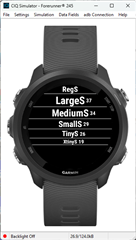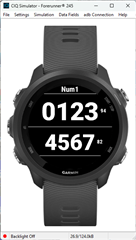My datafield tries to use the biggest font that fits the text to be displayed to the place available. The text can include letters, so numeric-only fonts are not of interest.
Currently I only try the fonts available in CIQ 1.0.0, but users ask if I can make the fonts bigger. So I started to look into it, and would need to get the right "generic" (true for all devices) order of fonts.
I assume that both of these are true:
CIQ 1.0: FONT_XTINY <= FONT_TINY <= FONT_SMALL <= FONT_MEDIUM <= FONT_LARGE
CIQ 1.3: FONT_SYSTEM_XTINY <= FONT_SYSTEM_TINY <= FONT_SYSTEM_SMALL <= FONT_SYSTEM_MEDIUM <= FONT_SYSTEM_LARGE
But is there a way to merge these 2 lists into 1?
In general what is the difference between FONT_FOO and FONT_SYSTEM_FOO?





